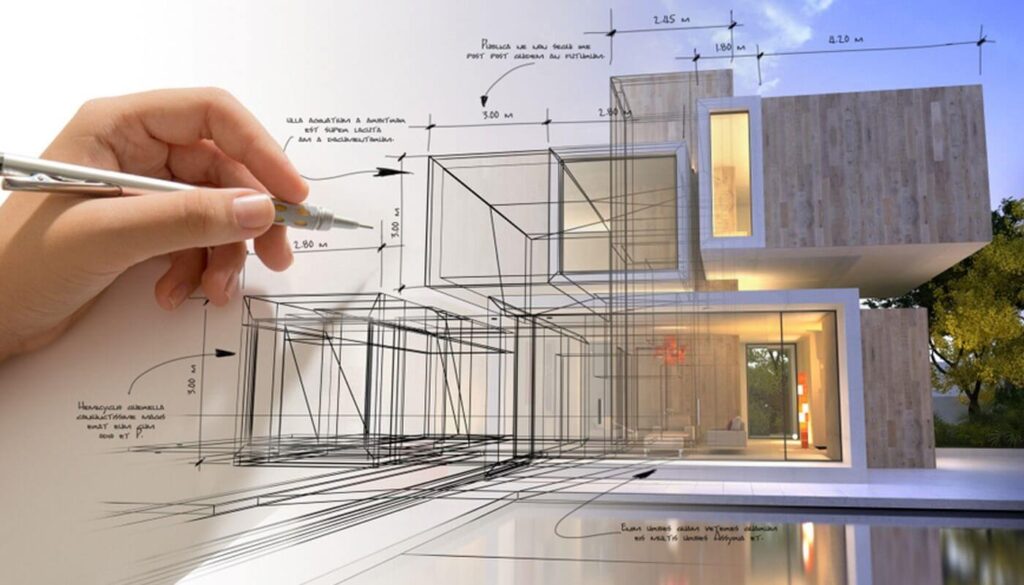The Impact of Technical Advancements on the Layout Practices of Contemporary Architects
The rapid advancement of technical tools has considerably improved the design landscape for modern engineers, cultivating extraordinary levels of innovation and sustainability. Exploring these dynamics reveals a nuanced interplay in between innovation and conventional design approaches, prompting a better examination of what the future holds for architectural practices.
Advancement of Architectural Tools
How have building tools transformed the style and building processes over the centuries? The advancement of building devices has actually significantly impacted the performance, accuracy, and creativity of design and construction.
With the arrival of the Renaissance, the intro of the compass and the protractor noted an essential change. These devices enabled architects to attain greater accuracy in their layouts, promoting the introduction of even more intricate and proportionate structures. The Industrial Transformation additionally transformed architectural exercise with the introduction of mechanized tools and products, enabling for bigger and extra enthusiastic jobs.
In the 20th century, the advancement of computer-aided design (CAD) software transformed the landscape when again, supplying designers with extraordinary capacities in modeling and visualization. Today, progressed devices such as Structure Information Modeling (BIM) and parametric style software proceed to press the limits of building advancement, enabling a more integrated strategy to design and building processes.
Improved Cooperation in Style
As modern technology remains to evolve, boosted collaboration in layout has come to be a cornerstone of modern-day architectural practice. The assimilation of digital devices such as Building Info Modeling (BIM), cloud-based platforms, and advanced visualization software application has actually changed the way architects, engineers, and stakeholders communicate throughout the layout procedure. These devices help with real-time interaction, allowing teams to share ideas, adjustments, and feedback promptly, no matter geographical place.

Additionally, interdisciplinary collaboration has been structured through these technical developments, enabling engineers to work extra carefully with other professionals, such as city coordinators and environmental professionals. The result is an extra natural approach to develop that takes into consideration numerous viewpoints and expertise. Inevitably, improved collaboration in layout is not simply a trend; it is important for developing ingenious, functional, and cosmetically pleasing design in a progressively complex globe.
Sustainability With Modern Technology
Sustainability in design has actually progressively become linked with technological technology, driving the market towards environmentally liable methods - cda architects. Contemporary engineers are leveraging advanced modern technologies to reduce ecological effect while enhancing the performance of structures. One famous instance is making use of Structure Information Modeling (BIM), which permits specific planning and source allowance, decreasing waste throughout building and advertising energy performance throughout a structure's lifecycle
Furthermore, clever materials and energy-efficient systems are being integrated right into layouts to optimize resource usage. Technologies such as photovoltaic or pv cells and eco-friendly roof covering systems harness eco-friendly power resources, contributing to lowered carbon footprints. Furthermore, the application of expert system in style procedures allows designers to replicate and examine energy usage, directing decisions toward even more lasting end results.
The assimilation of lasting innovations not only lines up with global environmental goals but additionally fulfills a raising need from customers for environmentally friendly services. As architects embrace these developments, the focus changes in the direction of producing spaces that are not just cosmetically pleasing however likewise functionally sustainable, thereby redefining the criteria of contemporary design. By doing this, technology works as a stimulant for sustainability, making it possible for designers to develop visit this web-site structures that regard and improve the native environment.
Difficulties in Implementation
While technical innovations in design hold excellent guarantee for enhancing sustainability, their implementation usually comes across significant obstacles - cda architects. One main challenge is the steep learning contour related to brand-new technologies. Engineers and building and construction specialists might require considerable training to properly make use of innovative software program and tools, which can delay job timelines and enhance prices
Furthermore, the integration of arising innovations, such as Building Info Modeling (BIM) and lasting products, frequently necessitates cooperation across multidisciplinary groups. This partnership can be impeded by distinctions in expertise, process, and communication styles, bring about prospective problems and ineffectiveness.
Financial constraints additionally complicate the adoption of cutting-edge innovations. Several architectural companies, especially smaller sized ones, may do not have the resources to buy innovative devices, limiting their capacity to contend with larger firms that can manage such investments.
In addition, regulatory structures and building codes may not equal technological innovations, creating ambiguity and prospective conformity concerns. This obstacle can inhibit architects from fully accepting new innovations, as the threat of non-compliance might surpass the benefits. Resolving these application challenges is vital for the effective assimilation of technological developments in contemporary building methods.
Future Trends in Architecture
The obstacles related to the application of new modern technologies in design have motivated a reevaluation of future patterns within the industry. As engineers browse issues such as sustainability, urbanization, and social equity, they are progressively adopting cutting-edge innovations to enhance design efficiency and ecological efficiency.
One popular trend is the assimilation of expert system (AI) in the design process. AI devices can assess substantial datasets to educate layout choices, improving both imagination and functionality. Similarly, Building Details Modeling (BIM) proceeds to advance, enabling real-time cooperation amongst stakeholders and promoting structured job monitoring.
Sustainable style practices are also obtaining momentum, with engineers concentrating on adaptive reuse and regenerative design look what i found concepts that lessen source consumption and waste. The unification of wise materials and renewable resource resources will better enhance the durability of structures in the face of environment adjustment.

Verdict
Technological innovations have actually considerably improved building style practices, assisting in improved precision, collaboration, and sustainability. The assimilation of tools such as Structure Info Modeling and parametric design software program, along with artificial intelligence and smart materials, encourages designers to resolve complex obstacles more successfully.